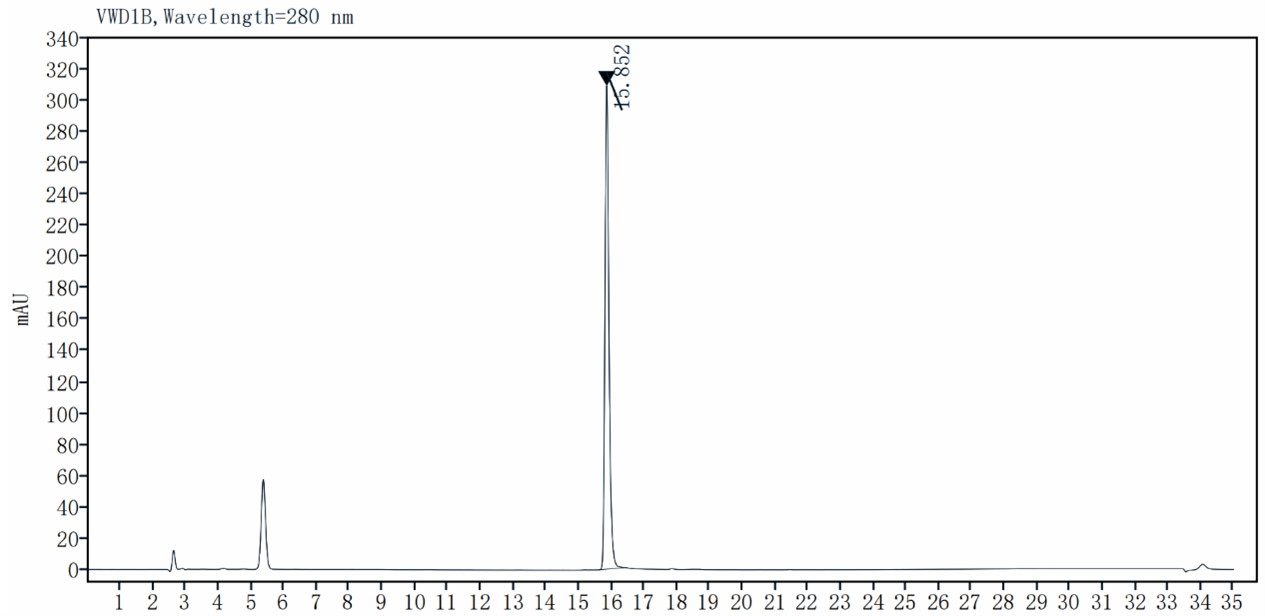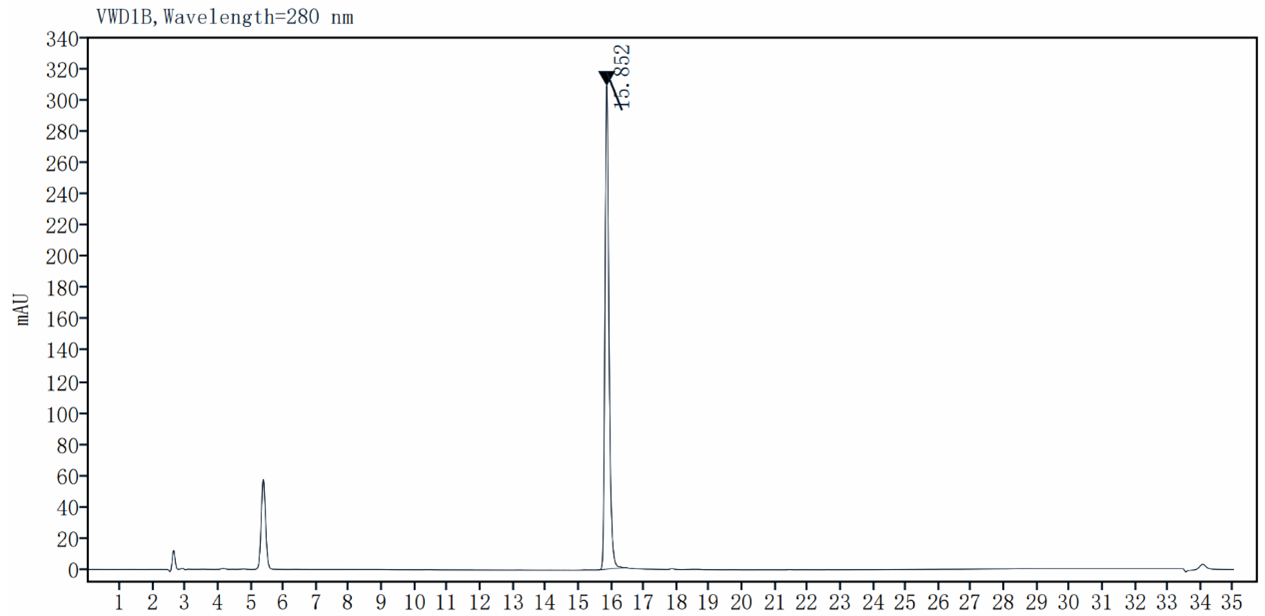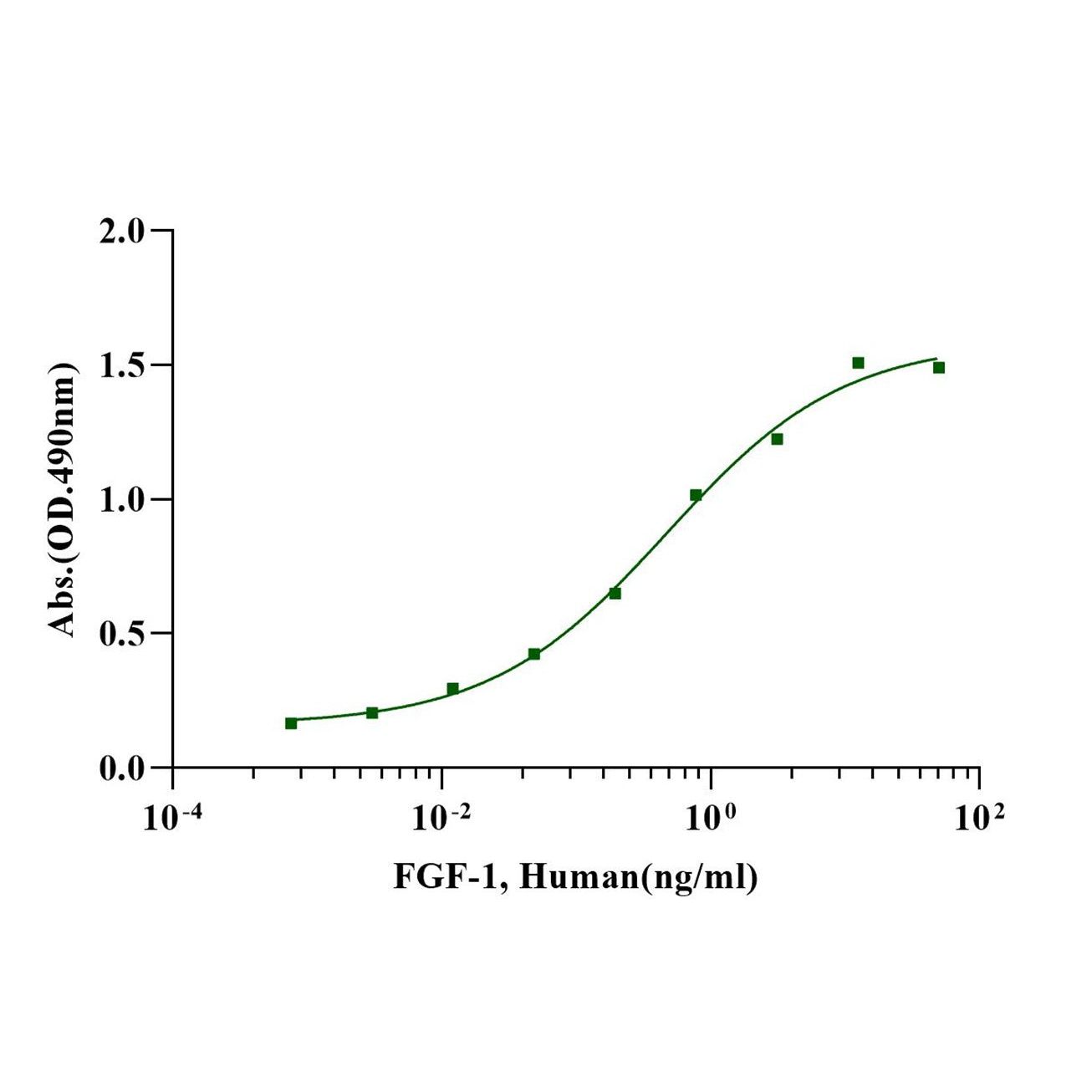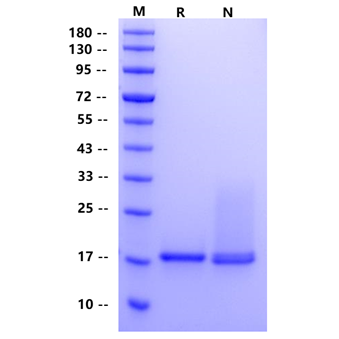Product Details
Product Details
Product Specification
| Species | Human |
| Synonyms | Fibroblast Growth Factor 1; FGF-1; Acidic Fibroblast Growth Factor; aFGF; Endothelial Cell Growth Factor; ECGFHeparin-Binding Growth Factor 1; HBGF-1; FGF1; FGFA |
| Accession | P05230-1 |
| Amino Acid Sequence | Phe16-Asp155 |
| Expression System | E.coli |
| Molecular Weight | 17kDa (Reducing) |
| Purity | >95% by SDS-PAGE & HPLC |
| Conjugation | Unconjugated |
| Tag | No Tag |
| Physical Appearance | Lyophilized Powder |
| Storage Buffer | 20mM PB, 150mM NaCl, 1mM DTT, pH7.4 |
| Reconstitution | Reconstitute at 0.1-1 mg/ml according to the size in ultrapure water after rapid centrifugation. |
| Stability & Storage | · 12 months from date of receipt, lyophilized powder stored at -20 to -80℃. · 3 months, -20 to -80℃ under sterile conditions after reconstitution. · 1 week, 2 to 8℃ under sterile conditions after reconstitution. · Please avoid repeated freeze-thaw cycles. |
Background
Human fibroblast growth factor 1 (FGF-1), also known as acidic fibroblast growth factor (FGF-Acidic), is one of the best characterized members of the FGF superfamily. FGF-1 is a powerful mitogen that exhibit potent effects on numerous different types of cells. It plays a number of roles in several important physiological and pathological processes, such as embryonic development, morphogenesis, angiogenesis, wound healing and atheromatosis, carcinogenesis, development, and invasion of cancer. FGF-1 is released extracellularly as a disulfide-linked homodimer and is stored in complex with extracellular heparan sulfate. The association of FGF-1 with heparan sulfate is a prerequisite for its subsequent interaction with FGF receptors. Ligation triggers receptor dimerization, transphosphorylation, and internalization of receptor/FGF complexes.
Picture
Picture
Bioactivity
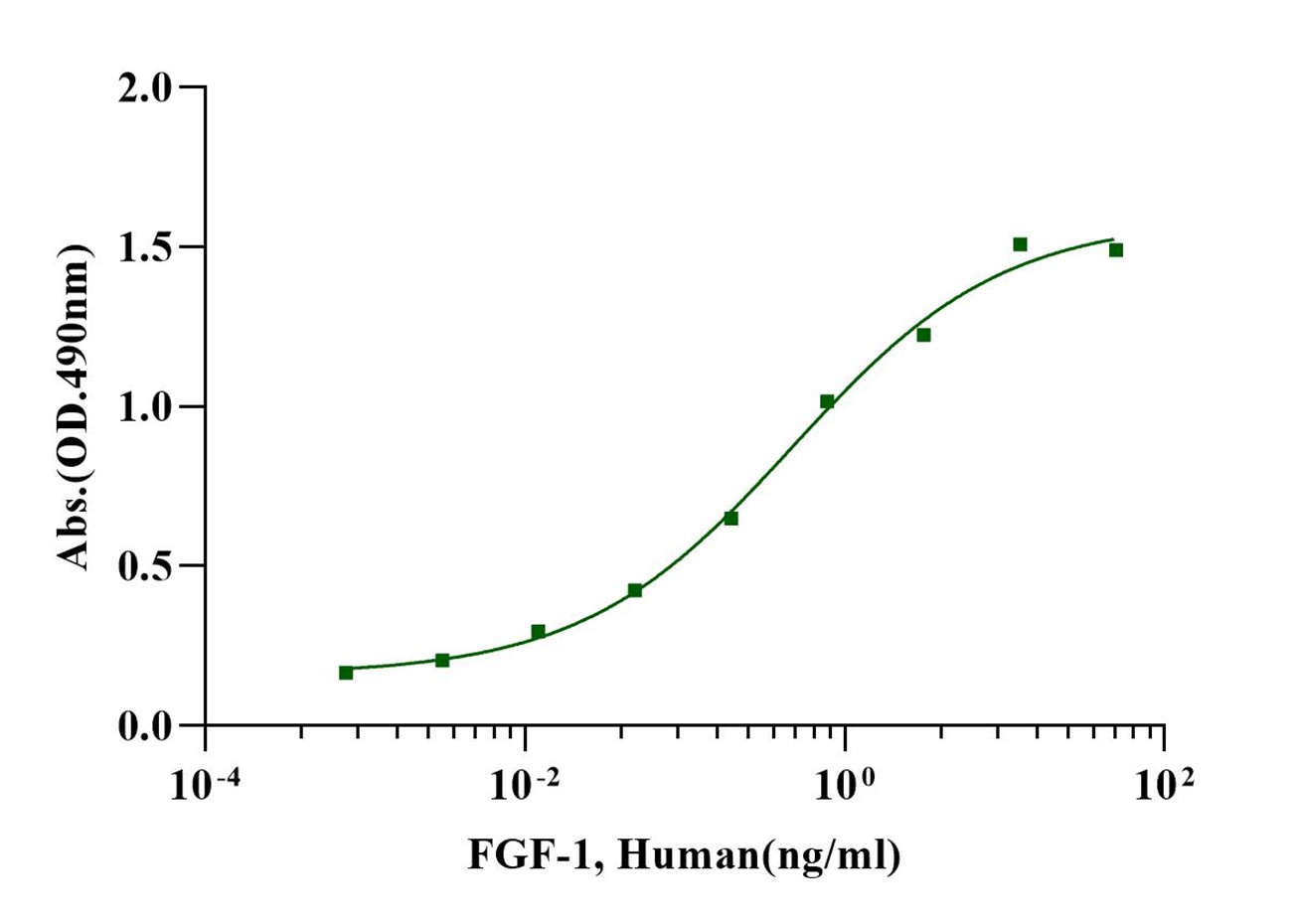
SDS-PAGE
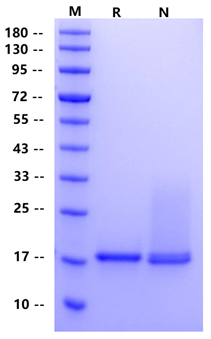
RP-HPLC
